At MEDDICON 1, we had the fantastic opportunity to sit and discuss the key elements of MEDDIC with some brilliant minds of leaders in the industry. Prefer to watch the full panel?
We had the pleasure of these three industry titans who have a huge amount of knowledge and experience between them. They are:
-
Em Radkowksi is the Vice-President of Global GTM Operations and Strategy at DataRobot, a company that uses the transformational technology of Artificial Intelligence to help businesses convert data into value. She has 12 years of experience and a wealth of knowledge from her time in the sales and GTM industry.
-
Caroline Woussen-Franczia is the founder of Uppercut-First, a structure that helps start-ups and scale-ups with their go-to-market strategy and scale-up plans. She is also the author of Popcorn for the New CEO, a book that provides snackable and practical advice in the business world.
-
Cliff Dorsey has almost 30 years of experience in the sales industry, having recently held the CRO role at Welcome after VP and Regional Sales Director roles at businesses like Medallia, Invodo, and Liveperson. He was formerly at PTC and worked alongside the MEDDIC godfathers Jack Napoli, Dick Dunkel, and John McMahon.
Most Important Elements of MEDDICC
Firstly, we got the leaders' thoughts on the most important and crucial elements of MEDDPICC. It was no surprise in the answers we got. Caroline kicked off with Champion as it can help you find the pain, Em went for Implicate the Pain, and Cliff decided on Metrics. “It’s the thing that quantifies the pain”, he added. “It creates a cycle that generates urgency.”
Champion might be the one that comes to mind for most readers, but bare this in mind; there is no Champion without pain, especially when the deal expands to further stakeholders. Even the most senior people in the industry will say Champion, but leaders in organizations will almost never get a deal put in front of them without some form of pain being implicated.
The Underrated element of MEDDIC
Caroline opted for Decision Criteria, calling it something that should be used at the beginning of the discovery. “It works as a capability requirement,” she said. “It tells you what you need to fix the problem or pain, and if it is done correctly this can be the differentiator.
“It is something that is overlooked - people see things like price as Decision Criteria, which it isn’t - you have to influence it and get agreement from your Champion that the Decision Criteria are the required capabilities.”
Agreeing fully with Caroline’s point on Decision Criteria, Em went for Metrics and put it to use in her specific field of the industry. She said: “MEDDIC plays a great part in being a partner for salespeople, and a lot of times MEDDIC is great with transformational technology.
“Where people can get a bit lost in transformation tech is that there’s a bifurcation between disruptive transformational tech, where you are joining a pre-existing market and making noise. In this market, MEDDIC helps you through with pre-defined Metrics that you are looking for and trying to influence. On the other hand, there is evangelical transformational technology, where you are trying to create pain and opportunity.
“Sometimes salespeople gloss over Metrics and do not spend enough time there - I constantly see people differentiate themselves against their peers by getting into the weeds there, with their Champions, with their Economic Buyers, to define which Metrics can move the needle.”
How To Get Organizational Buy-In From Your Leaders
Cliff Dorsey certainly has a breadth of experience, leading to him brushing shoulders with the top leaders of various organizations. There aren’t many better suited to give advice on how to get these leaders to adopt MEDDIC.
He started by looking at MEDDIC from a holistic perspective, saying: “Look at why the buy-in is important. If you’re going to achieve the full abilities, something transformational and repeatable, you need complete buy-in from the organization.
“I see sales leaders get buy-in from just their team and find success, but that’s it. My advice for talking to a CEO is this; these are people that come from a product or engineering background - for them sales can seem like art of black magic!
“They might not understand it, but I like to think of MEDDIC as the physics of sales - it’s the science of selling, not the art. CEOs, especially the aforementioned type, love the fact that MEDDIC makes things evidence-based and concrete, not something based on opinion.”
Em shared a different perspective, taking a more opportunistic approach and looking at leaks in the business where MEDDIC can provide a timely plug. “I would look at the state of the business and use this to evaluate the strengths and opportunities”, she discussed. “Opportunities are a great place to introduce MEDDIC.
“It can be used to derisk a business, as a mental tool for both internal employees and the people you work with - your Champions, your Economic Buyers, anyone from a customer perspective who spend most of their day away from buying your technology. MEDDIC helps influence this and gives SDRs the ability to make good decisions that can lead to a big win.”
Can You Create Pain?
A question came from the audience asking whether you can create a pain during a deal - something that Caroline declined but gave a smart workaround. “You cannot create but you can uncover”, she continued. “You can help the customer around the pain, we call them two-sided questions but they are discovery questions where it doesn’t feel like you are interrogating someone!
“It helps create a conversation and you want it to spark the question where your client might think “Oh, that might be a problem”. To do this, you need to be prepared, you need to know what is going on in the news, what is happening in their business and what their strategy is. Where is it something can be broken? You will want to focus down this route, by posing the point that something might be broke, but I can fix it.
“The only way you do this is by driving the conversation about the customer, then toward the problem, you can fix. If you start talking about features, functions, products, it is very hard to go back to pain and “create” it. The pain has to exist, so you cannot create it. Sometimes the customer doesn’t know that they have it, and this is where you can implicate it.”
Advice On Going From Learning MEDDIC To Enabling It
Cliff believes that MEDDIC has to be embedded in an organization’s culture, for it be their operating system and part of the day-to-day process for it to be enabled.
“It is important for sales leaders in particular, when people come on board, that these new additions understand that this is how we’re doing it”, he affirmed. “The evolution from using it as an individual checklist to MEDDIC being an organizational common language has a lot of dependencies.
“How do you make it inspectable? How do you make it repeatable? If it isn’t embedded in your sales process, it’s hard to have a thing that is both repeatable and inspectable. Doing this can also create a culture of accountability - this is what you do by being a leader, you lead by example. You cannot be scared too, don’t use MEDDIC two weeks before the close of a deal, instead use it five months earlier during pipeline generation. This is where the hard work is, using the fundamentals across the whole journey.”
Em agreed with Cliff’s sage wisdom on taking MEDDIC from learning to enabling it. She wanted to add a great point about her experience implementing MEDDIC in four different companies, saying: “My experience with leaders and sellers has shown me that it becomes less of an inspection when it is part of your communication.
“If you have sellers and leaders that are consistently communicating through the use of MEDDIC in their business, it creates so much synergy. Reps are using MEDDIC not because they are being told to, but because it is putting more money in their pocket at the end of each quarter.”
What Is The Proudest Moment Of Your MEDDIC Implementation
This is a great moment for all of the experts, who have seen countless careers develop and skyrocket thanks to the use of MEDDIC.
Caroline painted an emotional picture when she talked about the face of a representative who just multiplied a deal by 4 or 5x. She said: “I had two reps overachieving by 200% last quarter, just because they were coachable, went the extra mile, and always brainstormed with their managers, with their teams, and used MEDDIC as a common language.
“They were able to figure out that “Hang on, the Economic Buyer is the Champion” and use this information to not only close the deal but multiply it by 4 or 5 times. It feels like fireworks in your brain!”
Em concurred, following on with a similar point. “It’s always at the rep level - being able to see folks grow, develop and learn more through the use of MEDDIC is always powerful”, she said.
“Something that hits home is pain isn’t something known, so MEDDIC is something that can help the customer and solve a problem. To have a rep get on stage to tell their story and bring a Champion to an event, all because of MEDDIC, it is so powerful.”
The focus on career growth and development was continued with Cliff’s answer, as he looked at the huge amount of careers he’s seen that have been boosted by MEDDIC. “Taking part in the development of the people in my team is the number one reason why I do any of this,” he emphasized.
“When I see people that started as individual contributors and have gone on, through things we learned together, to become sales leaders, CROs, CEOs at other companies, to me that is the most satisfying thing ever. I tell people during the interview process that our goal is to put their career on an upward trajectory because of the use of these methodologies, and when that comes true, it is hugely satisfying.”
OUR TAKEAWAY
It was a brilliant discussion between four incredible front runners in the sales industry, who gave insights from their varied backgrounds and experiences. Whether you are just getting started on the sales ladder as a junior SDR or you have progressed up to CEO, there are so many pieces of advice and wisdom that can help you close your next success.



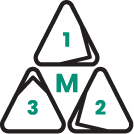

.png)





.png)


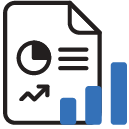


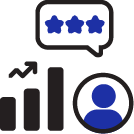

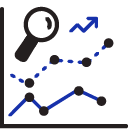

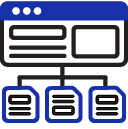










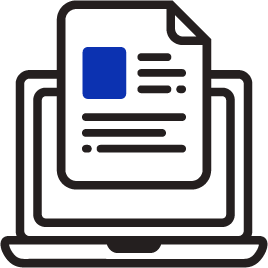



%201.png)








.png)
.png)

.png)
